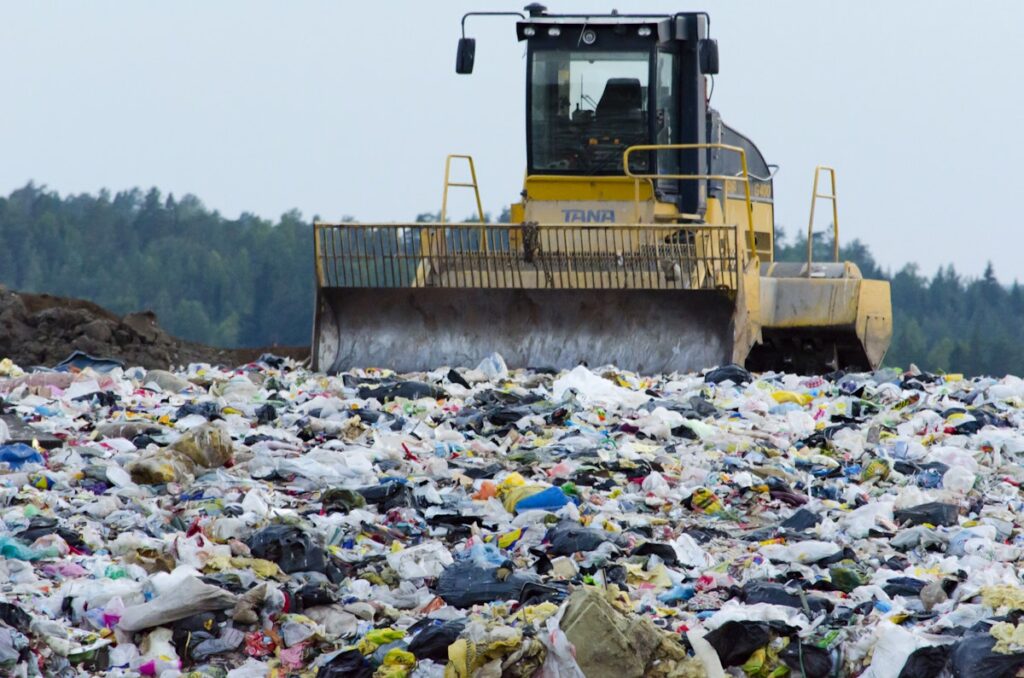By Erez Yerushalmi and Krishnendu Saha
The circular economy – the idea of reduce, reuse and recycle – has long been promoted as one solution to the environmental crisis. Instead of the old take, make, use, throw away model, it aims to keep materials in play for as long as possible.
In fashion, this means going well beyond traditional repair habits and shopping second-hand. It entails innovations such as clothing rental platforms, fibre-to-fibre recycling, and AI tools that cut waste in supply chains and sort textiles for recycling.
This sounds like a win-win: less waste, fewer raw materials used, and a lighter footprint on the planet. But in fact, these innovations could end up making things worse.
Innovations in the circular economy – especially in the textiles and clothing industry – can trigger what’s called a backfire rebound effect. This is where the production and consumption of clothing rises, potentially wiping out any environmental gains. It happens when efficiency improvements lower costs and make products seem more sustainable, tempting consumers to buy more.
The rebound effect is an index measuring how innovation affects production – ranging from below zero (super conservation: the best outcome for the environment) to above one (backfire: the worst), with a range of outcomes in between.
It’s not a new concept. In 1865, British economist William Stanley Jevons observed that improvements in coal efficiency actually led to more coal being burned. Today, the same dynamics can occur in fashion.
Recycled clothing, marketed as eco-friendly, may tempt people to buy more. And if fashion brands then scale up – at home or abroad – the negative environmental impact is amplified, wiping out many of the gains from recycling.

Clothing and textiles are widely held to be the world’s second-most polluting sector after energy, consuming around 20 per cent of the world’s water every year, emitting 1.7 billion tonnes of CO₂ annually (about 10 per cent of global emissions), and generating 92 million tonnes of waste each year. Less than one per cent of this waste is recycled into new garments.
With annual global production of new textiles projected to climb to 160 million tonnes by 2030 (from 124 million tonnes in 2023), the speed of this growth means there is a clear need for more recycling and reuse.
We found a global average backfire effect of 1.6 – a strikingly high figure. This means that for every one per cent gain in environmental textile innovation, there will be an increase in new textile production of 0.6 per cent.
Rather than easing pressure on the planet, innovation in textiles is fuelling more production and harm. What we really need is a rebound effect below 1 (a partial rebound) – or better still, below zero (super conservation).
What causes this special rebound in textiles?
When an efficient recycling innovation is introduced, production costs drop. Consumers, drawn by lower prices and the moral appeal of ‘sustainable’ products, increase their purchases. Businesses see opportunities to expand into new markets. Soon, the gains from the innovation are overwhelmed by rising demand, leaving the planet worse off.
This doesn’t mean circular economy strategies for fashion should be abandoned – but they need guardrails. In our simulations, a Pigouvian tax (a tax on damaging behaviour) was effective in reducing the rebound effect.
The greater the efficiency gains from circular innovations, the higher the tax required to prevent unsustainable consumption. For textiles, we found that a 10 per cent efficiency gain from circular innovation – such as fibre-to-fibre recycling or AI sorting – requires a minimum uniform tax of 1.25 per cent on production to prevent backfire (full rebound). A 2.5 per cent tax could reduce the rebound to manageable levels (partial rebound).
Other traditional policy tools could achieve similar results, including production caps on new clothes, incentives for longer lifespans for products, and measures to encourage genuinely sustainable consumption.
And because the rebound effect is not uniform across the world, such policies require both international coordination and measures that are specific to individual regions.
For example, in Bangladesh, where textiles account for more than 80 per cent of exports and employ millions of people, blunt curbs on fast fashion could devastate livelihoods. Yet it is demand from wealthy countries for cheap clothing that fuels this dependence. Policies must therefore balance global environmental goals with local economic realities.
But the challenge goes deeper – right to the tension between a growth-driven economic system and the planet’s limits. Degrowth theory (the controversial but increasingly discussed idea that populations could voluntarily curb production and consumption) asks whether true sustainability is possible if economies remain dependent on increasing consumption.
Behavioural change is crucial – this means embracing minimalism, reusing more, and buying only what truly adds value. In the fashion world, this could mean campaigns that promote repairing clothes and cutting back on consumption, backed by policies that guide consumers towards these more sustainable habits.
Real-life examples already exist. France has a repair fund that refunds part of the cost of mending clothes. The Waste and Resources Action Programme works in the UK, Europe and Australia as a public–private partnership to cut waste across the fashion sector. And schemes like the Better Cotton Initiative, Cascale and Fashion Pact aim to shift production towards more sustainable practices.
Measuring this rebound effect is key if policies are to deliver in practice. The fashion industry needs to back its sustainability promises with evidence, not just good intentions.
Erez Yerushalmi is Professor of Economics, Birmingham City University and Krishnendu Saha is Associate professor in Circular Economy, Birmingham City University. This article is republished from The Conversation under a Creative Commons licence







Click here to change your cookie preferences